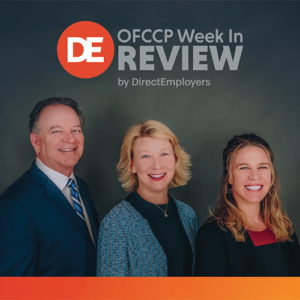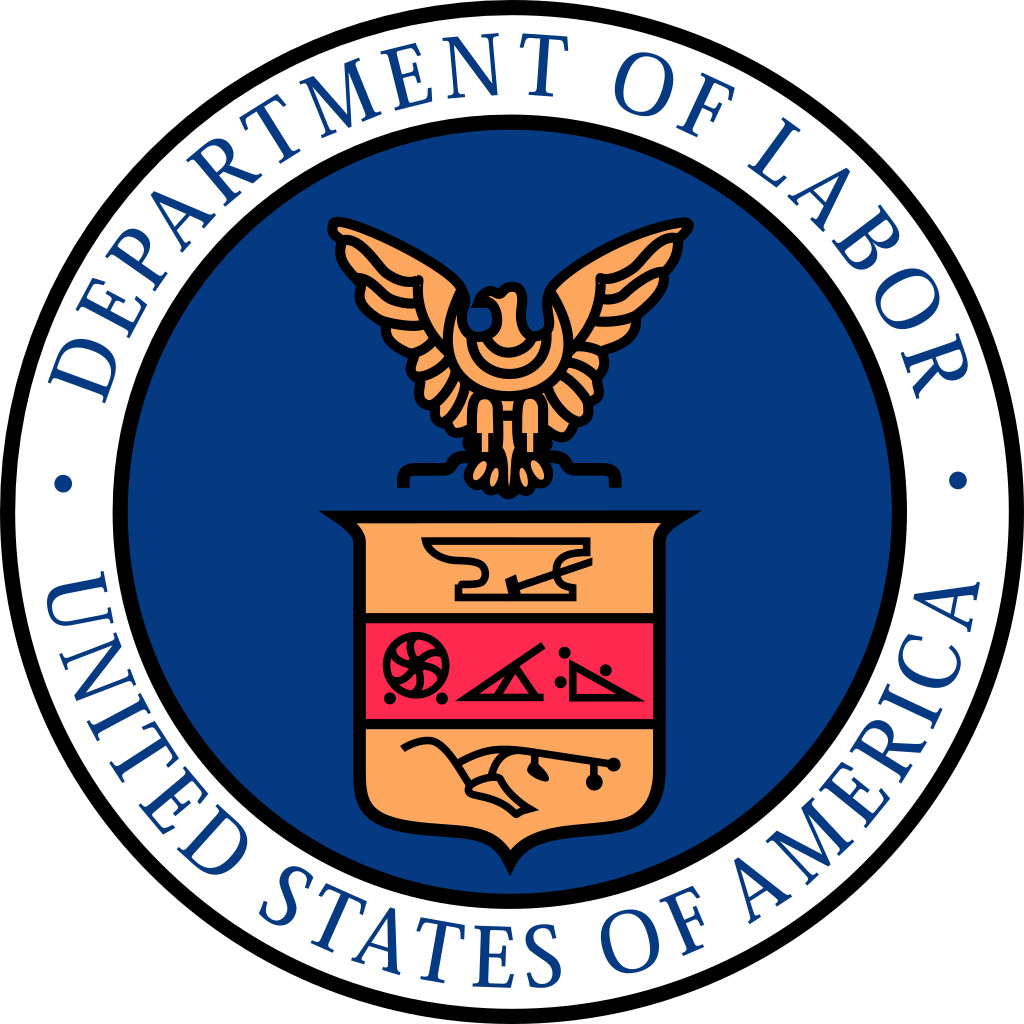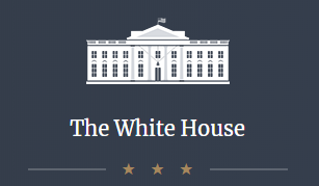
- Little Known Section 18(b) of OSHA Will Now Drive Many States to File Lawsuits to Stop the OSHA COVID-19 Vaccine Mandate They Do Not Want
- VETS Seeks Partners For Employment Navigator Pilot Program
- New Vaccine FAQs For Federal Contractors
- White House Issued National Strategy on Gender Equity & Equality, Includes Priority to Address Wage Gap
- EEOC Spotlights Disability Discrimination Achievements
- EEO-1 Report Filing Deadline – TODAY!
Tuesday, October 19, 2021: Little Known Section 18(b) of OSHA Will Now Drive Many States to File Lawsuits to Stop the OSHA COVID-19 Vaccine Mandate They Do Not Want

But here is what will galvanize a number of states in the U.S. opposed to mandated COVID-19 vaccinations to sue OSHA to stop its implementation of its ETS, once the ETS becomes legally effective. Section 18(b) of OSHA allows each of the fifty states and each of the federal territories to assert jurisdiction under state/territory law over safety and health issues. To do so, however, each such state must get approval from federal OSHA. Federal OSHA does so by way of OSHA-approved State Plans in which the state agrees to enforce safety and health statutes in the state at least as extensive as the safety and health protections the federal OSH Act imposes:
“(b) Any State which, at any time, desires to assume responsibility for development and enforcement therein of occupational safety and health standards relating to any occupational safety or health issue with respect to which a Federal standard has been promulgated (emphases added) under section 6 shall submit a State plan for the development of such standards and their enforcement.”
See section (c) of Section 18 of OSHA if you want to review all of the conditions to which the state must agree as a predicate for OSHA to approve that state’s proposed State Plan.
In the case of the very rare issuances of ETSs, the states and territories of the United States with approved Section 18(b) State Plans have thirty (30) days to implement the ETS. See OSHA ETS FAQs. There are currently 22 OSHA-approved State Plans and two OSHA-approved Plans in U.S. territories covering the private sector. (There are another six OSHA-approved state plans covering only state and local government workers according to OSHA’s State Plan division. See state listing here.)
The skirmishing has already begun, even in advance of OSHA’s promulgation of its ETS (which will be effective within 1 day of its publication in the Federal Register (after OMB approves it). Senior OSHA officials have already begun to warn State Plan states and territories to be ready to implement OSHA’s COVID-19 Vaccination Mandate ETS within 30 days of the date it becomes legally effective. In response, the Bloomberg Daily Labor Report reported Tuesday that seven state attorney generals (in Alaska, Arizona, Indiana, Kentucky, South Carolina, Utah and Wyoming) already “have vowed to fight a testing and vaccination mandate.”
At this writing, OMB is finishing a grueling schedule of over 200 meetings about OSHA’s proposed ETS with stakeholders ranging from unions, trade associations, employers, state governments, health care providers, pharmaceutical companies, etc. While no one knows what changes, if any, OMB will order to OSHA’s draft proposed ETS, or when OMB might greenlight OSHA to publish it, all agree OMB approval of an OSHA ETS is “imminent.”
Three Numbers to Remember:
- According to the U.S. Center for Disease Control, approximately 1/3 of adult Americans have yet to be vaccinated at all. (The number and percentage change daily, but the percentage has plateaued in recent months and does not change much week-over-week.)
- December 8, 2021 is the first trip-wire date at which time numerous employee groups (including federal civilian employees and federal contractors/subcontractor employees) will have to be vaccinated or lose their jobs, according to the White House. See our two WIR stories dated Thursday September 13, 2021 detailing this development: President Biden Mandates COVID-19 Vaccine for Certain Federal Contractors: Exceptions As Interesting As Who is Covered and Two of President Biden’s Four Vaccine Mandates are Likely Unlawful, Without Implementing Rules, While the Other Two are Likely Lawful.
- OSHA could cause its vaccination mandate ETS to be effective as early as the day after publication in the Federal Register except in states with State Plans. In those states, the OSHA ETS would be legally effective thirty days from the legally effective date of the ETS (i.e., the day after OSHA publishes it in the Federal Register). But, whenever it became legally effective in any particular state, the OSHA ETS would require all employers with over 100 employees to require their employees to be “vaxed.” If not, the coming OSHA ETS will apparently require that the employer must either (1) terminate the employment all of its employees who fail or refuse to be vaxed, or (2) reportedly the ETS, as drafted, will require OSHA to exact draconian financial fines in the amounts the ETS will identify. Let’s together model a projected date just to range a possible date the ETS COULD become legally effective: If the ETS publishes this week…say Friday October 29, 2021, the OSHA ETS could become legally effective Monday November 1, 2021 in states in which federal OSHA operates and thirty days later in State Plan states: December 1, 2021.
So, the “rubber hits the road” at the end of November to the first week of December. Some employers which choose to comply may have to issue WARN notices. (Think about that).
What Went on Here to Create OSHA State Plans the States Enforce but Implementing Safety and Health Rules the Feds Dictate?
Look at the date the President signed OSHA into law: 1970. That President was Richard M. Nixon. Republican. State-Rights advocate. While a fiscal conservative, President Nixon loved big government. (The movement to shrink the federal government in size and influence commenced only after the Watergate Scandal and after the unpopular Vietnam war. Jimmy Carter ran as a Democrat on a platform in 1976 of shrinking and consolidating the federal government as he had done to the bloated Georgia state government he found in place when he became the Governor of Georgia. Ronald Reagan, a Republican, followed President Carter running on a platform “to drain the swamp” in Washington D.C. and shrink both the federal government and federal regulation.) So, Nixon’s trade-off for big government was that the federal government “proposed” the laws and the States enforced them. OSHA became the blueprint for the modern federal agencies setting regulatory standards which serve as a “floor” (not a “ceiling”) which the states were required to implement unless they chose to go beyond them, in the discretion of the state governments. Republican Governors are now faced with the maxim: Eat what you sow.
Thursday, October 21, 2021: New Vaccine FAQs For Federal Contractors

- If a covered contractor employee requests an accommodation, and that accommodation is denied by the covered contractor, how long should the contractor employee be afforded to be fully vaccinated?
- Can a covered contractor grant a covered contractor employee an extension to the deadline for vaccination due to a documented medical necessity even if the contractor employee does not meet the legal definition of “disability” to be entitled to an accommodation?
- What medical conditions does the CDC consider a contradiction to vaccination with COVID-19 vaccines?
- Are there circumstances that the CDC recommends delaying vaccination for COVID-19?
- Is vaccination for COVID-19 recommended for people who are trying to get pregnant or might become pregnant in the future?
- Does the CDC recommend that an individual delay vaccination due to pregnancy?
- Can a covered contractor employee delay a COVID-19 vaccine because they have recently received another vaccine, such as the seasonal influenza vaccine?
- Can a covered contractor employee who participates in a clinical trial for a COVID-19 vaccine be considered fully vaccinated?
- Can a covered contractor employee who has received a heterologous primary vaccine series be considered fully vaccinated?
How We Got Here
See our reporting from the Executive Order that created the Safer Federal Workforce Task Force and vaccine mandates through the ongoing saga that pulls in Federal Contractors and Subcontractors.
- September 24, 2021: By Executive Fiat, White House Task Force Suddenly Extended a COVID-19 Vaccine Mandate to Include ALL Employees of Federal Contractors and Subcontractors
- September 16, 2021: White House Safer Federal Workforce Task Force Greenlights Federal Executive Agencies to Impose Vaccination Mandates on Federal Contracts/Subcontracts Beyond Biden’s Federal Contractor Vaccination Mandate
- September 9, 2021: President Biden Mandates COVID-19 Vaccine for Certain Federal Contractors: Exceptions As Interesting As Who is Covered
Friday, October 22, 2021: White House Issued National Strategy on Gender Equity & Equality, Includes Priority to Address Wage Gap

Responding to the EO, the Gender Council submitted its Strategy and today the White House issued a Fact Sheet on the National Strategy on Gender Equity and Equality which includes a link to the 42-page Strategy. The Strategy sets out only very broad aspirational objectives, without any details and provides little new information. Its main asset is to serve as a collection of social, cultural and economic barriers women currently face in society and observes that women disproportionately occupy lower paying jobs and occupations in America. Section One establishes the guiding principles. Section Two outlines ten strategic priorities, acknowledging and addressing their interconnection. Finally, Section Three elaborates on the whole-of-government effort that is required for implementation.
The ten strategic priorities are:
- economic security;
- gender-based violence;
- health;
- education;
- justice and immigration;
- human rights and equality under the law;
- security and humanitarian relief;
- climate change;
- science and technology; and
- democracy, participation, and leadership.
Let’s Talk Compensation
We noted in our previous story that OFCCP Director Yang’s work at OFCCP on compensation equity proposals will necessarily have to mirror and marry with the “Strategy.” However, the more interesting question is whether the “tail will wag the dog” since OFCCP is 40 years down the path in the development of compensation equity enforcement policies and programs. And because pay equity enforcement has been either a primary goal, or the primary goal, of the last three OFCCP Directors stretching back 20 years. OFCCP has more institutional knowledge about discrimination law policies in the workplace compensation context and more systemic pay equity enforcement experience than any other federal agency.
Priority number one, Improve Economic Security and Accelerate Economic Growth,includes four broad objectives.
- Promote Economic Competitiveness by Advancing Women’s Employment in Well-Paying Jobs…We will seek increased pay for jobs that are disproportionately held by women by pursuing an increase in the minimum wage and the elimination of the tipped minimum wage and the subminimum wage for all workers, including those with disabilities (emphasis added)…Editors Note: Wow! However well intentioned, this is a proposal that the federal government discriminate in wages based solely on sex…more likely than not in violation of the Due Process Clause of the Fifth Amendment to the U.S. Constitution (requiring federal agencies which discriminate based on sex to show “that legal burdens should bear some relationship to individual responsibility” …in this case for women accepting lower paid jobs along with men who accepted the same low pay. See Frontiero v. Richardson.
- Address Persistent Gender Discrimination and Systemic Barriers to Full Workforce Participation…We will work to strengthen laws prohibiting wage discrimination on the basis of gender, race, and other characteristics, and will increase resources for enforcement (emphasis added). We will also promote pay transparency, taking steps to increase analysis of pay gaps on the basis of gender, race, and other factors (emphasis added), and outline plans to eliminate these disparities. We will pursue policies to eliminate reliance on prior salary history in compensation decisions, which can perpetuate and compound the effects of prior discrimination (emphasis added)…Editor’s Note: This is not fresh thinking for federal Government contractors already undertaking the suggested analyses and already subject to the suggested policies and after OFCCP’s now 30-year review of hundreds of millions of government contractor pay decisions in well over 100,000 OFCCP audits only to find a few hundred (statistically insignificant) differences in pay based on sex across six presidential administrations including almost 17 years of investigations under Presidents Clinton, Obama and Biden.
- Strengthen Working Families and the Economy by Investing in Care Infrastructure
- Promote Financial Inclusion and Close the Gender Wealth Gap
What’s Next?
According to the “Methods” section of the Strategy, “…each federal agency will be required to establish and prioritize at least three goals that will serve to advance the objectives identified in this Strategy, and detail the plans and resources needed to achieve them in an implementation plan. At least one of the identified goals should be achievable within current authorities and resources.”
Editor’s Note: This latter suggestion is a bit unfortunate because of its implied predicate that the federal agencies are not currently appropriately discharging their duties in support of their sworn missions. The former suggestion is also baffling in that it suggests “goals” not apparently within the current legal authority of the agencies…suggesting the need for the agencies to first seek a Congressional delegation of authority, or at least Rulemaking to make legal any “plans and resources” not currently authorized.
The EEOC issued a press release indicating its involvement thus far in helping to develop the Strategy. The Press Release also added a headline that the EEOC “Supports a Full Implementation of White House Strategy” and a statement of policy support for the Strategy in the body of the Press Release noting that: “[t]he EEOC is pleased to help implement this much needed strategy to advance equal opportunity for all.” We were unable, however, to find a Commission policy vote on the White House Strategy, or any evidence the five-Member Commission met to consider the Friday morning release of the Strategy, or any Commission-approved implementation strategy. We will continue to keep you apprised of any Commission position on the Strategy, should the Commission in fact address itself to the Strategy and develop an Implementation Plan.
Friday, October 22, 2021: EEOC Spotlights Disability Discrimination Achievements

She spotlighted a few of the Agency’s achievements as to disability discrimination in the recently closed Fiscal Year.
- Providing ongoing technical assistance about COVID-19 and the Americans with Disabilities and Rehabilitation Act;
- Filing 40 new lawsuits, including systemic cases alleging disability discrimination;
- Expanding direct video phone access and American Sign Language-fluent staff to better serve the Deaf and hard of hearing individuals;
- Resolving a class age and disability discrimination investigation against a healthcare provider to prevent unlawful medical examinations of older employees; and,
- Conducting the Commission’s first-ever virtual hearing on the connections between COVID-19 pandemic and civil rights, including the Americans with Disabilities Act.
Monday, October 25, 2021: EEO-1 Report Filing Deadline – TODAY!

“Please note that this new deadline is the FINAL DEADLINE and all eligible filers MUST submit data by this date. No additional changes to the filing deadline will be made.”
What Happens Bad If You File Late?
Not much. There are no financial fines or penalties. The EEO-1 filing portal will stay open after today for an unstated period of time (historically, usually 30 days, although it stayed open for almost 6 extra months past the filing deadline during the last EEO-1 collection). The EEOC does have the authority, however, to commence an investigation into an employer’s failure to file an EEO-1 (See 29 CFR Section 1602.56) and also to file a Complaint in federal District Court to seek an injunction to compel a covered employer to file (See 42 U.S.C. SEC. 2000e-8. [Section 709(c)]). However, the EEOC has never invoked this authority to compel an EEO-1 filing so long as anybody can remember.
THIS COLUMN IS MEANT TO ASSIST IN A GENERAL UNDERSTANDING OF THE CURRENT LAW AND PRACTICE RELATING TO OFCCP. IT IS NOT TO BE REGARDED AS LEGAL ADVICE. COMPANIES OR INDIVIDUALS WITH PARTICULAR QUESTIONS SHOULD SEEK ADVICE OF COUNSEL.
SUBSCRIBE.
Compliance Alerts
Compliance Tips
Week In Review (WIR)
Subscribe to receive alerts, news and updates on all things related to OFCCP compliance as it applies to federal contractors.
OFCCP Compliance Text Alerts
Get OFCCP compliance alerts on your cell phone. Text the word compliance to 55678 and confirm your subscription. Provider message and data rates may apply.

 The U.S. Department of Labor’s Veterans’ Employment and Training Service (VETS)
The U.S. Department of Labor’s Veterans’ Employment and Training Service (VETS)